Harvesting Chestnuts (Lessons learned)
Welcome all to my first ever STEM (Science Technology Engineering and Mathematics) post here on #stemgeeks.
I was excited to discover that @themarkymark had created the #stemgeek community for the Steemit blockchain.
My background is a scientific one, majoring in conservation biology, and i would like to do some posts here in regards to that. Today I will do a rather light post/blog to try it out and then I will do some more in depth pieces to be preserved forever on the blockchain.
I hope you get something out of it and maybe even learn a thing or two!
Today, I want to share with you the difference between edible (sweet) and poisonous (horse) chestnuts.
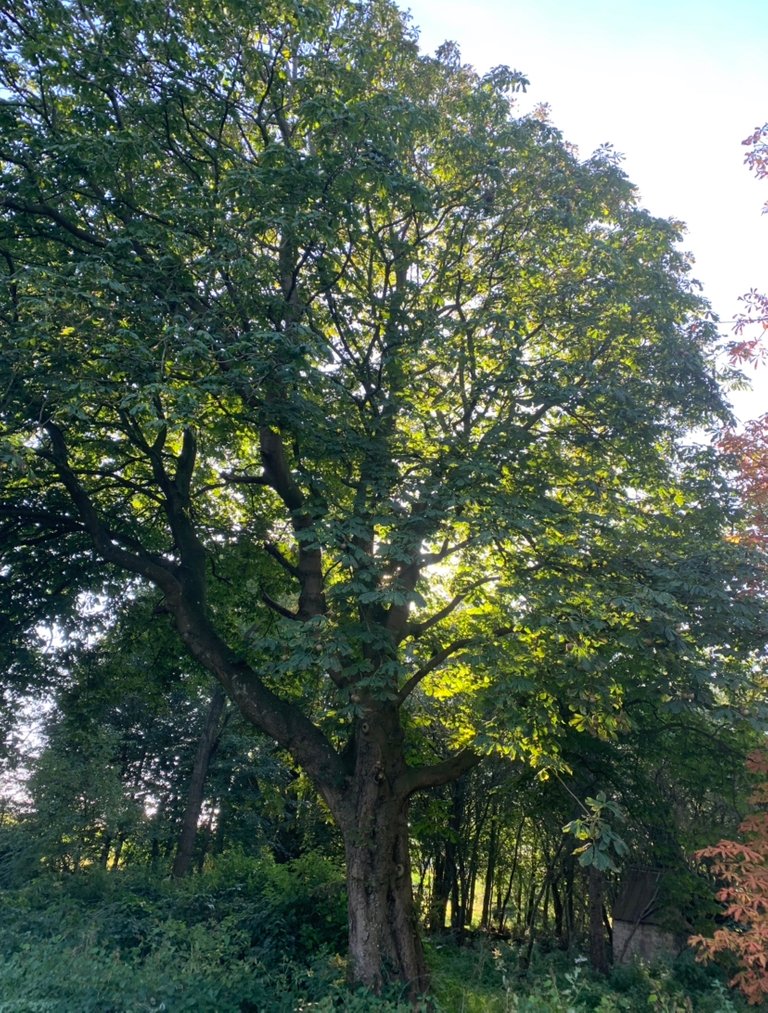
We have two of these humongous chestnut trees next to our house and I thought it would be fun to collect some of the chestnuts with the kids today. Unfortunately, the are not sweet chestnuts so we cannot eat them, but we still had fun along the way!
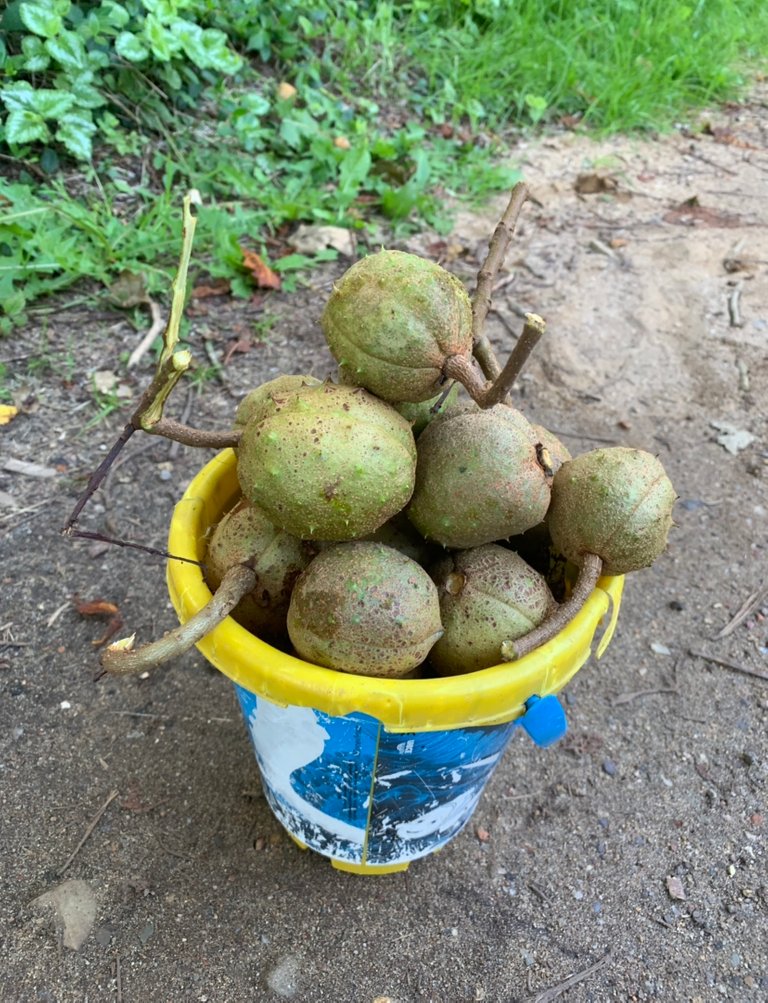
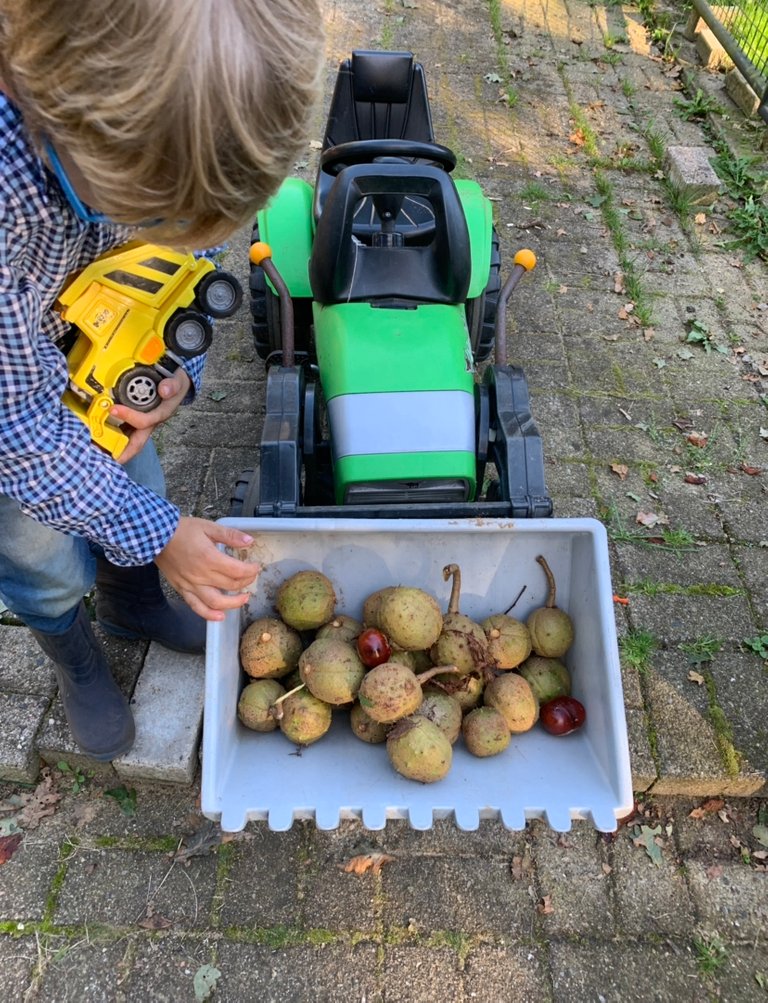
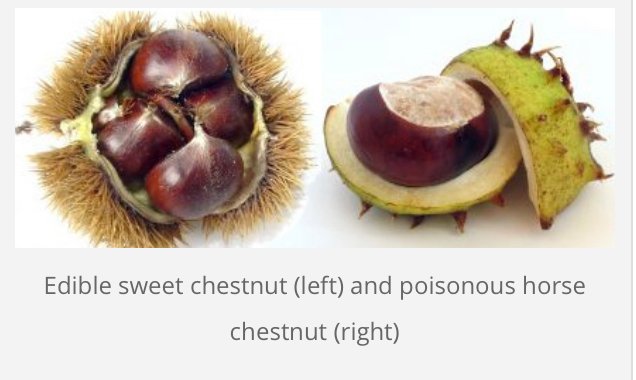
Mid-September is typically when you can begin to harvest chestnuts. Make sure they have already fallen to the ground and it is even better when the outer shell has begun to crack. Open them up and remove the nuts and set them out for a day or two before you cook them. This allows some of the starch inside to convert to sugar and gives it more of a sweet taste. Make sure you don't wait too long (under a week) or they will taste bitter.
To my knowledge, Chestnut trees are only native to the United States, don’t quote me on that, so I will keep my eye out for any Sweet Chestnut Trees here in Germany.

The green bark on these tree limbs are really fascinating to me. I have never seen anything like it before and Chestnut is a good hardwood so I gathered some for our fireplace.
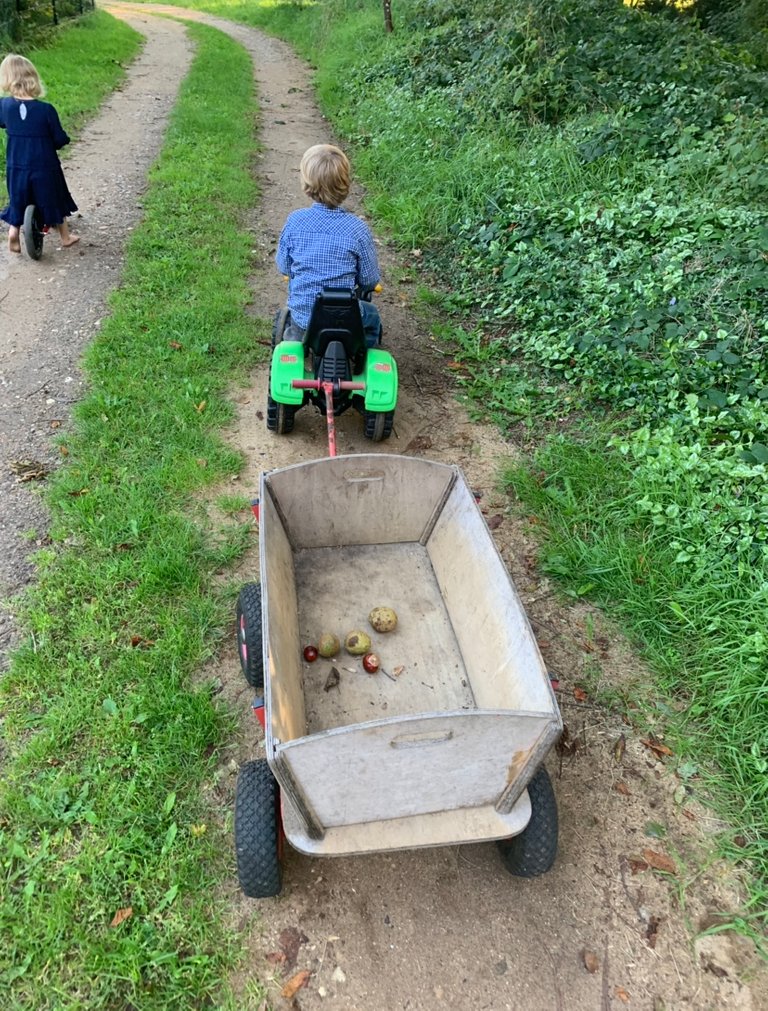
A hard days work of harvesting non-edible chestnuts is done! I think the kids had a lot of fun and maybe even learned something! Hope you did too!
Have a good weekend everybody!
Welcome!
It's a good thing I don't eat chestnuts usually. Why is it called a horse chestnut anyways?
Thank you very much! That is a good question I will have to try and find out. I did just read though, that you can bury the horse chestnuts in the swampy cold ground for the winter then boil them in the spring to eat them. I'd rather just search for sweet chestnuts!
You got me looking things up now! It looks like both chestnuts are native to southeastern Europe and Asia. The Romans seem to have been the culprits in spreading them across Europe, where they've naturalised in many places. There was me thinking that they were native to the UK.
Posted using Partiko Android
Leave it to the Romans to spread nuts all over Europe 🤣 That's pretty interesting, and hopefully, then I can find some sweet chestnuts this fall.
Posted using Partiko iOS
The classical edible chestnuts are rare in Germany, most years they don't get ripe enough to be eaten. And there was an illness last century, the chestnut blight. It killed a lot of sweet chestnut trees in Europe as well as most of them in North America.
So for European children, chestnuts are for crafts and games, not for eating.
Really interesting thank you for sharing! I never heard about the blight, but makes sense because you don't see them much in the wild. Sucks too because I love chestnuts!
The history of the chestnut blight is really interesting. The results of it are not so visible in Europe, especially northern Germany, but in the east of the US it must have been impressive. In some regions chestnut trees made up a quarter of all trees in the old woods. And now they're gone. In Europe a therapy with a virus helps to make the trees resist the blight.
btw: I wrote a post last week that might interest you, about the end of the war in my birthplace.